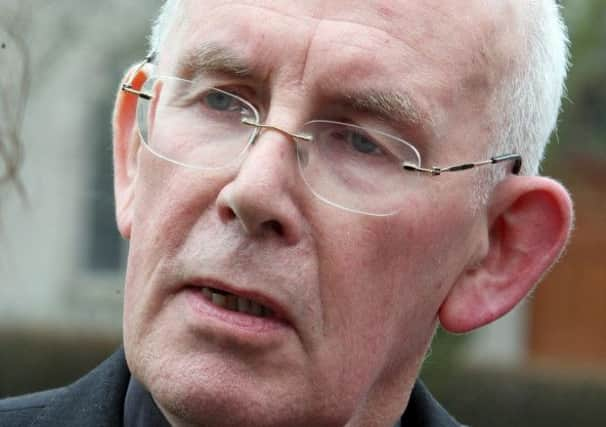Cardinal’s resignation accepted by the Vatican


Last month, Dr Brady, who has been the leader of Ireland’s Catholics for 18 years, confirmed that he offered his resignation to Pope Francis in July.
His tenure had been beset by clerical child sex abuse scandals and claims that he helped to cover up one case.
Advertisement
Hide AdAdvertisement
Hide AdArchbishop Eamon Martin has been announced as his successor. The 52-year-old will become the 116th Archbishop of Armagh and Primate of All Ireland in succession to Saint Patrick.
He was appointed as coadjutor archbishop of Armagh in January 2013 and ordained in April 2013.
Archbishop Martin said he genuinely felt “honoured to assume the role of ‘shepherd’ in the Archdiocese of Armagh”.
“I look forward to serving the people of 61 parishes in the counties of Armagh, Derry, Louth and Tyrone. I feel humbled to be following in the footsteps of St Patrick, and like him, I pray for ‘God’s strength to pilot me, God’s wisdom to guide me, God’s shield to protect me’,” he said.
Advertisement
Hide AdAdvertisement
Hide Ad“No doubt many challenges lie ahead of me, but I look forward with trust and hope in God to sharing with others the ‘Joy of the Gospel’.”
All cardinals are obliged to offer to resign when they reach their 75th birthday, but the Pope decides whether to accept it.
Dr Brady said he was “pleased” that Pope Francis had accepted his resignation and spoke about some of the highlights of his time in the church.
“It has been my privilege to have been appointed a bishop by Pope St John Paul II, to have worked closely with Pope Benedict XVI, and to have taken part in the conclave that elected Pope Francis - that conclave has been the highlight of my life,” he said.
Advertisement
Hide AdAdvertisement
Hide Ad“It has been a great joy and privilege for me to serve as their bishop [Armagh] and also to travel and meet people from all over Ireland in my role as Primate.
“I am looking forward to retirement and, no doubt, it will take me some time to get used to it, but it will be good to have more time for family, friends and to follow the football.”
Cardinal Brady resisted calls to resign in 2010, when it emerged that when he was a young priest in 1975, he attended meetings during which two teenage sex abuse victims were sworn to secrecy after they alleged they had been abused by Fr Brendan Smyth.
Smyth, who was later convicted of more than 100 charges of child sexual abuse, died in prison in 1997.
Advertisement
Hide AdAdvertisement
Hide AdHowever, instead of going to the civil authorities about the teenagers’ allegations against him in 1975, clerics, including Séan Brady, took evidence from the pair and asked them to sign vows of silence.
Cardinal Brady apologised publicly for his role in mishandling the claims against Smyth, and described himself as a “wounded healer” who would, in future, prioritise the safety of children in the church.
However, in 2012, a BBC investigation into the case revealed that Dr Brady had failed to ensure the safety of other victims of Fr Brendan Smyth, despite being given their names and addresses by one of the two teenagers who had reported the abuse in 1975.
In his response to the BBC investigation, Dr Brady said he had been asked by his then bishop to record the allegations, and described his role as merely that of a “note taker”.
Advertisement
Hide AdAdvertisement
Hide AdCardinal Brady added that as a priest in 1975 he had “absolutely no authority over Brendan Smyth” and was “shocked, appalled and outraged” when he discovered in the mid-1990s that Brendan Smyth had gone on to abuse others.
He apologised to one of the abused teenagers in May 2012, but said he had no intention of stepping aside.
In addition to his own personal difficulties, the cardinal has presided over the church at a time of immense and turbulent change, with falling church attendances, dwindling ordinations and strained relations between the church and state authorities.
A series of government-backed inquiries in the Republic of Ireland, including the Ferns Report, the Ryan Report and the Murphy report, laid bare the extent of clerical child abuse over many decades.